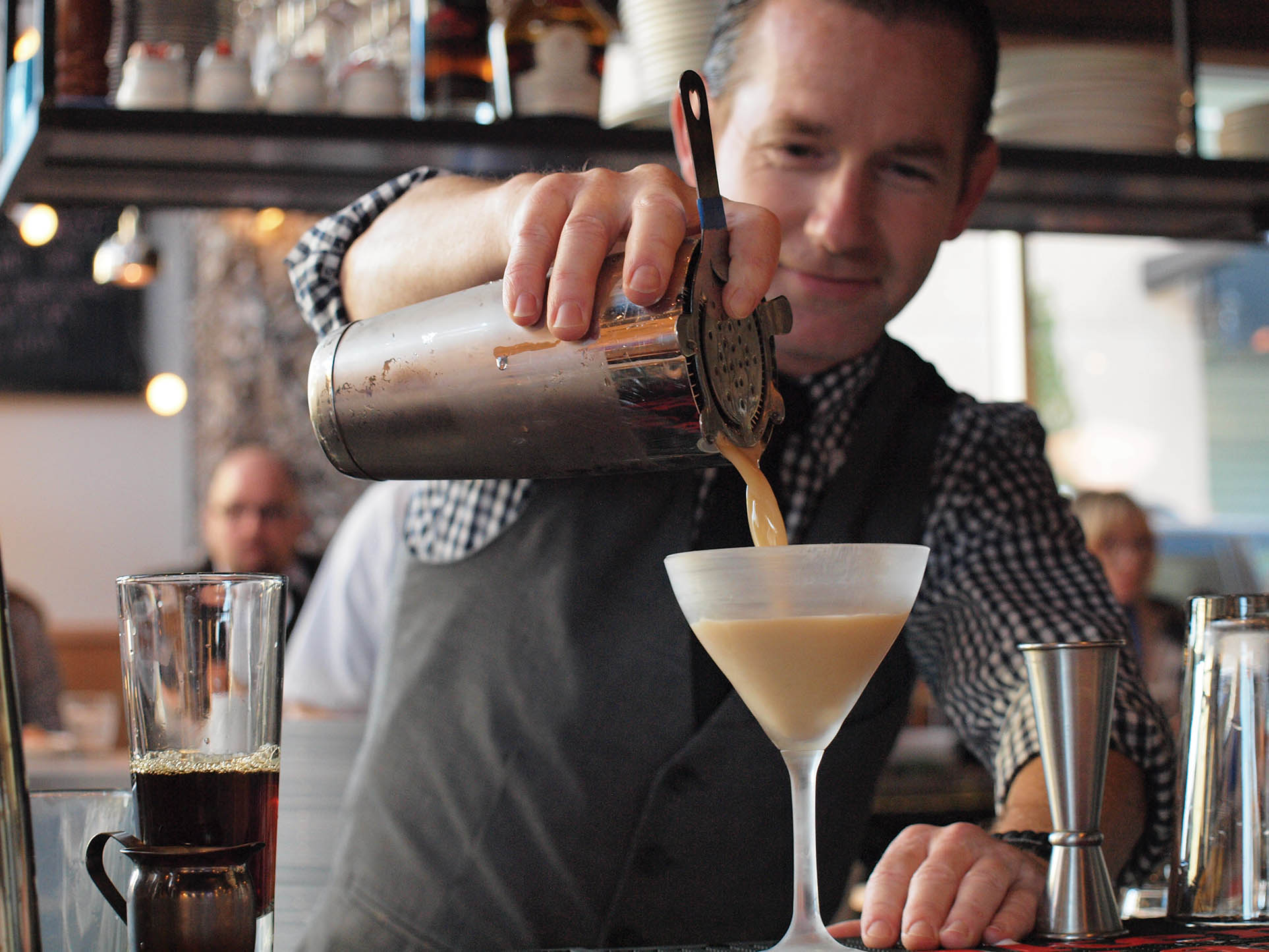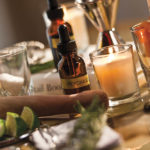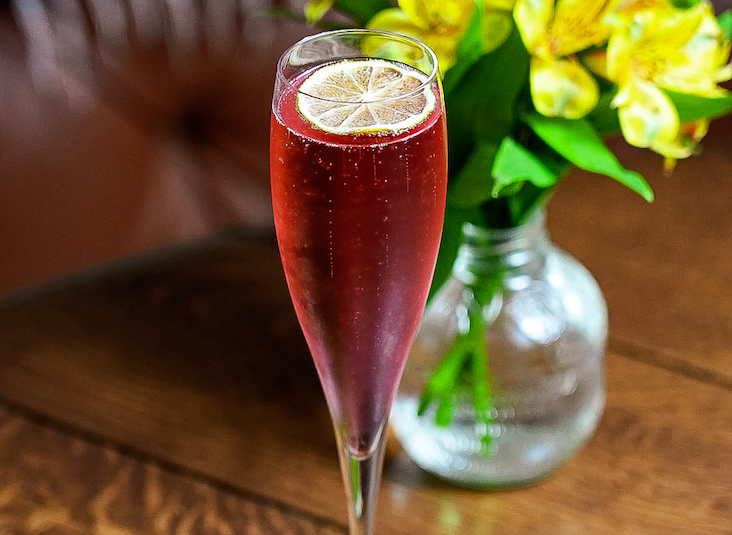Coffee drinks are hot year round, and they’re not just for dessert anymore. Libations that incorporate coffee can range from warming and decadent in the winter to frosty and refreshing in the summer.

The Caffe Italiano from 312 Chicago combines hot coffee with Appleton Estate rum, Demerara syrup and black walnut bitters topped with Bicerin whipped cream.
As consumers become more sophisticated about spirits and cocktails, many expect to see unique coffee drinks that go beyond the classic Irish or Mexican Coffee. Here are a few tips for creating signature coffee cocktails.
Start with the spirit
“Whiskey is an obvious choice to pair with coffee that has caramel and spiced notes—not just in Irish Coffee,” says Kenny Cohrs, head bartender at Jax Fish House in Kansas City. Mezcal, tequila and Cognac also work well with coffees, he adds, and vodka is a great way to add alcohol to coffee without changing its flavor too much.
Rum is another good fit with coffee. Italian restaurant 312 Chicago in the Allegro Hotel offers a riff on Irish Coffee called Caffe Italiano. The drink, priced at $13, combines hot coffee with Appleton Estate rum, Demerara syrup and black walnut bitters topped with Bicerin cream (heavy cream whipped with Bicerin Chocolate liqueur).
But spirits with sharp or medicinal flavor profiles, like gin, can be “tricky if not downright difficult to pair with coffee,” Cohrs says. It can be done, though.
Kate Blackman, who heads up drink recipe development at Parisi Artisan Coffee in Kansas City, created a gin-based coffee drink called the Cafe Negroni. The cocktail incorporated coffee-infused Campari, gin and vermouth, and sold for $7.50 at Parisi’s Leawood, KS, location. Blackman starts with a certain spirit she wants to use, or an existing classic cocktail she wants to riff on.
Consider different coffee flavor profiles
Bartenders are used to tasting and evaluating spirits, but some experts say you should do the same with specific types of coffees. Blackman recommends starting with notebook in hand.

Chocolate Fish Coffee Roasters in Sacramento, CA, has been experimenting with nitrogenating cold-brew coffee and then pulling it through a nitro tap.
“The process often begins when I am trying to ‘define’ a new coffee,” she says. “I take notes about the sweetness, acidity, mouthfeel, flavor attributes and finish,” Blackman explains. “Often, one of those attributes sparks an idea for a complementary or contracting ingredient.”
Tweak or upgrade the classics
There’s nothing wrong with offering traditional coffee-based or flavored drinks, but you can set your concept apart by providing an exceptional or unusual twist. Irish Coffee variations include Calypso Coffee, which adds rum and Kahlua to coffee, Coffee Royale, adding cognac and sugar, and President’s Coffee, adding cherry brandy.
A craft or regional twist can also give a classic drink a jolt. For instance, Pepe Le Moko, a cocktail den run by mixologist Jeffrey Morgenthaler at the Ace Hotel in Portland, OR, offers an Espresso Martini made with Stumptown coffee extract, Kahlua, overproof vodka and lemon oil. The $11 coffee drink is a big seller for the bar and ties into Portland’s strong coffee culture.
Think beyond the sweet
Laura Clark, a lead barista at Kaldi’s Coffee in Kansas City and an avid cocktailian, finds coffee-drink inspiration in The Flavor Bible by Karen Page and Andrew Dornenburg.
She recently developed a Caprese-inspired, nonalcoholic coffee drink.
“I used a Nicaraguan coffee that had notes of white grape, cherry and dark chocolate,” Clark says. “I knew I wanted to make an iced drink, and found that using the [coffee and espresso maker] AeroPress brought a juicy coffee with a ton of acidity that reminded me of tomatoes.”
She incorporated a local fig balsamic vinegar, “which added earthiness and bitterness to the drink,” Clark says. “For sweetened, I did a basil-infused sugar on the rim.”
Work with coffee reductions
Using a coffee reduction is another way to preserve the full flavor of a java cocktail. You can make it by brewing coffee at a few times normal strength or simmering regular coffee in a saucepan until it reduces by half.
Brass Union, which opened this past June in Sommerville, MA, serves a drink called the Esqueleto. The $10 cocktail blends Espolon reposado tequila, a coffee reduction, Luxardo maraschino liqueur, lemon, Thai chili peppers and a house-made passion fruit soda.
And the Rum Line, which opened late last year in the Loews Miami Beach Hotel, serves a drink called the Cargo Ship that uses a coffee reduction from local roaster Panther coffee. The $15 drink also includes Ron Zacapa 23 rum, Batavia Arrack and mole bitters; it’s served in a glass that’s been rinsed with Talisker Storm Scotch.
Consider cold or flash brewing
Iced coffee can be made a variety of ways, but flash brewing over ice can lock in sweetness and minimize acidity. “Flash brewing gives you a lighter body in the coffee than a typical cold-brew method with more oils,” says Edie Baker, co-owner of Chocolate Fish Coffee Roasters in Sacramento, CA.
To flash brew, replace half the water in the recipe with ice and brew the coffee onto the ice.
Standard cold brewing has its charms as well. Instead of extracting the flavorful oils and solubles in a few minutes from the coffee using hot water, do it with room-temperature or cold water over the course of 12 hours or so. Using a Toddy maker or experimenting with traditional methods like sun brewing in a jar will result in a hearty, oily coffee compared by many to a dark stout beer.
These coffees provide a robust flavor to chilled coffee cocktails. Red Star Tavern in the Portland, OR, Hotel Monaco has a cold-brew cocktail called the Cold Pressed Andes ($10). It’s mixed with vanilla vodka, creme de cacao and Menta Branca over ice in a Collins glass topped with fresh cold-brew coffee and whipped cream.

The Cold Pressed Andes from Red Star Tavern in Portland, OR, a cold-brew cocktail with vanilla vodka, creme de cacao and Menta Branca.
Baker and her team have been experimenting with nitrogenating cold brew and then pulling it through a nitro tap, as you would do with a Guinness. The results have been stunning, she says.
“People absolutely love it,” Baker says. “First we marketed it as a ‘morning beer,’ but now we serve it all the time.”
Chocolate Fish’s nitro cold brew ($4 per tulip glass) cascades as you watch with tiny bubbles rising, with a creamy head like an oatmeal stout.
Stirred, Not Shaken
Coffee lends wonderful complexity to a cocktail—especially the light smoke of the roasted beans and the slightly tannic notes, according to Cooking Channel hosts Alie Ward and Georgia Hardstark. Since you don’t want to water those flavors down, treat espresso drinks like stirred cocktails made from all liquor ingredients, such as a Manhattan or an Old Fashioned.
That means instead of shaking these kinds of cocktails over ice, you should stir them with a bar spoon and strain into a glass, with or without a large ice cube. The stirred coffee cocktail will reward you with rich flavor, Ward and Hardstark say. Here are three of the pair’s espresso cocktail recipes, all to be stirred—not shaken.
Limoncello Iced Latte
1 oz. Grand Marnier
1 oz. Villa Massa limoncello
2 ½ oz. Coffee
Splash of cream
Whipped cream
Pour Limoncello and Grand Marnier into glass coffee cup or mug, over ice. Top with coffee and cream, stir well and garnish with whipped cream.
Orange You Glad It’s Got Tequila?
1 ½ oz. Reposado tequila
¾ oz. Orange liqueur
¾ oz. Espresso, chilled
Add all the ingredients to a tall glass or a cocktail shaker. Add ice. Stir with a long spoon for 30 seconds to a minute, and strain into an up glass. Garnish with a strip of orange peel, spiraled inside the glass.
Amaro Amore
1 ½ oz. Rye or bourbon
¾ oz. Averna amaro
½ oz. Espresso, chilled
Add first three ingredients to a tall glass or shaker. Add ice. Stir with a long spoon and strain into an up glass. Garnish with one Luxardo cherry.








